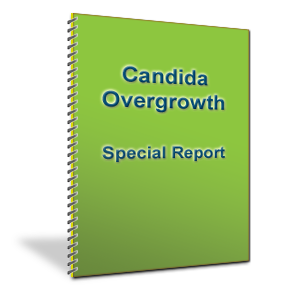Treatment guidelines – Candida Overgrowth
Misdiagnosis & incorrect treatments can lead to long-term misery… so be aware!
Candidiasis or Candida Albicans, as it is more commonly referred to, is not fully acknowledged in mainstream medicine as a significant disease or infection. The result is that this yeast infection is often misdiagnosed due to symptom overlaps.
First – here’s how NOT to treat Candida!
When you are recommended treatment for Candida, be careful you have not been prescribed the same drugs that could have caused your Candida Overgrowth in the first place – this may seem strange but it does happen, and often too.
This is how this can happen – because the symptoms of Candida Albicans overlap with other GI Tract disorders and can easily be mistaken for the symptoms of ulcers and H.pylori, this may lead your physician to prescribe a combination of “broad spectrum” antibiotics. This may then further feed the overgrowth of Candida, which then leads to further stress on the immune system – resulting in an increase of Candida-related problems.
Recommended Candida Treatment
First, make sure you get a proper diagnosis! Currently, the diagnosis is clinical, combined with a blood test. Since almost everyone has Candida in their bodies, tests for its presence need to be specific and include testing for C. krusei and C. tropicalis.
When you are diagnosed with Candida, you can start your treatment by avoiding the following foods;
- SUGAR and SIMPLE CARBOHYDRATES – such as those found in all sweetened food including the use of honey, molasses, sorghum, maple syrup, sugar, fructose, maltose, dextrose, corn syrup, etc.
- YEAST PRODUCTS – such as beer, wine, yeast-leavened bread, natural B vitamins, brewer’s yeast
- FERMENTED and MOLD FOODS – such as mushrooms, cheese, vinegar, mustard, catsup, relish, and other condiments made with vinegar.
How can you get rid of Candida?
To effectively treat Candida overgrowth there are three objectives;
- INHIBITING CANDIDA – To inhibit, Candida, or “even the odds,” so to speak, the first part of the treatment is to systematically kill off the Candida. This can take up to 2 months of treatment. Note that there is no such thing as a quick fix for Candida.
- REINTRODUCING GOOD FLORA – Good probiotics must also be taken for 3 consecutive months. This is required to re-introduce good flora so that the ratio of good vs bad bacteria can sustain a stable balance of flora for optimum health.
- RESTORING BALANCE – Seeking the advice of a Nutritionist who can determine your Metabolic Type is a very important step in your recovery process, particularly for sustaining good health in the future. Starving the yeast is one thing, but starving the patient or unbalancing the biochemistry at the same time can only be weakening to the immune system and therefore counter-productive.
When addressing Candida overgrowth, a well-balanced and nutrient-dense diet can be an essential component of the treatment plan. The goal is to support the body’s immune system, reduce inflammation, and create an environment that discourages the growth of Candida. Here are some dietary guidelines for managing Candida:
- Low-Sugar and Low-Carb Foods:
- Avoid added sugars: Candida feeds on sugar, so it’s important to limit or eliminate refined sugars, sweets, and sugary beverages.
- Limit carbohydrates: Reduce the intake of refined carbohydrates, as they can break down into sugars in the body. Focus on complex carbohydrates like whole grains, vegetables, and legumes.
- Non-Starchy Vegetables:
- Leafy greens: Kale, spinach, Swiss chard, and other dark leafy greens are rich in nutrients and fiber.
- Cruciferous vegetables: Broccoli, cauliflower, Brussels sprouts, and cabbage are low in sugar and support detoxification.
- Lean Proteins:
- Chicken, turkey, fish: Choose lean sources of protein for immune support and muscle maintenance.
- Plant-based proteins: Include legumes, tofu, and tempeh for variety.
- Healthy Fats:
- Avocado: A good source of healthy monounsaturated fats.
- Olive oil: Extra virgin olive oil contains anti-inflammatory compounds.
- Nuts and seeds: Almonds, walnuts, chia seeds, and flaxseeds provide healthy fats and fiber.
- Probiotic-Rich Foods:
- Fermented foods: Incorporate probiotic-rich foods like yogurt (unsweetened and plain), kefir, sauerkraut, and kimchi to support gut health.
- Herbs and Spices:
- Garlic: Known for its antifungal properties.
- Ginger and turmeric: Anti-inflammatory spices that can be beneficial.
- Low-Fructose Fruits:
- Berries: Blueberries, raspberries, and strawberries are lower in sugar compared to some other fruits.
- Whole Grains in Moderation:
- Quinoa, brown rice, and buckwheat: Whole grains that can be included in moderation.
- Hydration:
- Water: Drink plenty of water to support detoxification and overall health.
Keeping a balanced perspective!
Truly yeast-free diets, or people, are both impossible to come by. They can only be avoided in the diet by eating solely fresh dairy, meat, fish, and peeled fresh fruits and vegetables.
From a practical standpoint, total elimination of yeast from the body is also neither feasible nor desirable, considering that yeast is very likely beneficial to the body when a proper balance exists.
Truly effective treatment of Candida overgrowth does not seek the total eradication of Candida from the diet or the person…but rather a restoration of a proper and balanced ecological relationship between man and yeast.
Candida Overgrowth cannot be dealt with quickly, it is a long and slow process – no matter what!
Because of the rapid regrowth of this infection, and also the relative difficulty of the dietary requirements, Candida syndrome can last for quite some time. More severe cases can take up to 6 months to clear.
Get the key to a safe and proven treatment here…
As hard as it seems, it is entirely possible to get rid of Candida Overgrowth naturally and effectively. To get the key to a proven treatment method simply download this Special Report now! It is easy to read and contains all you need to know.
JUST RELEASED !!
Candida report

